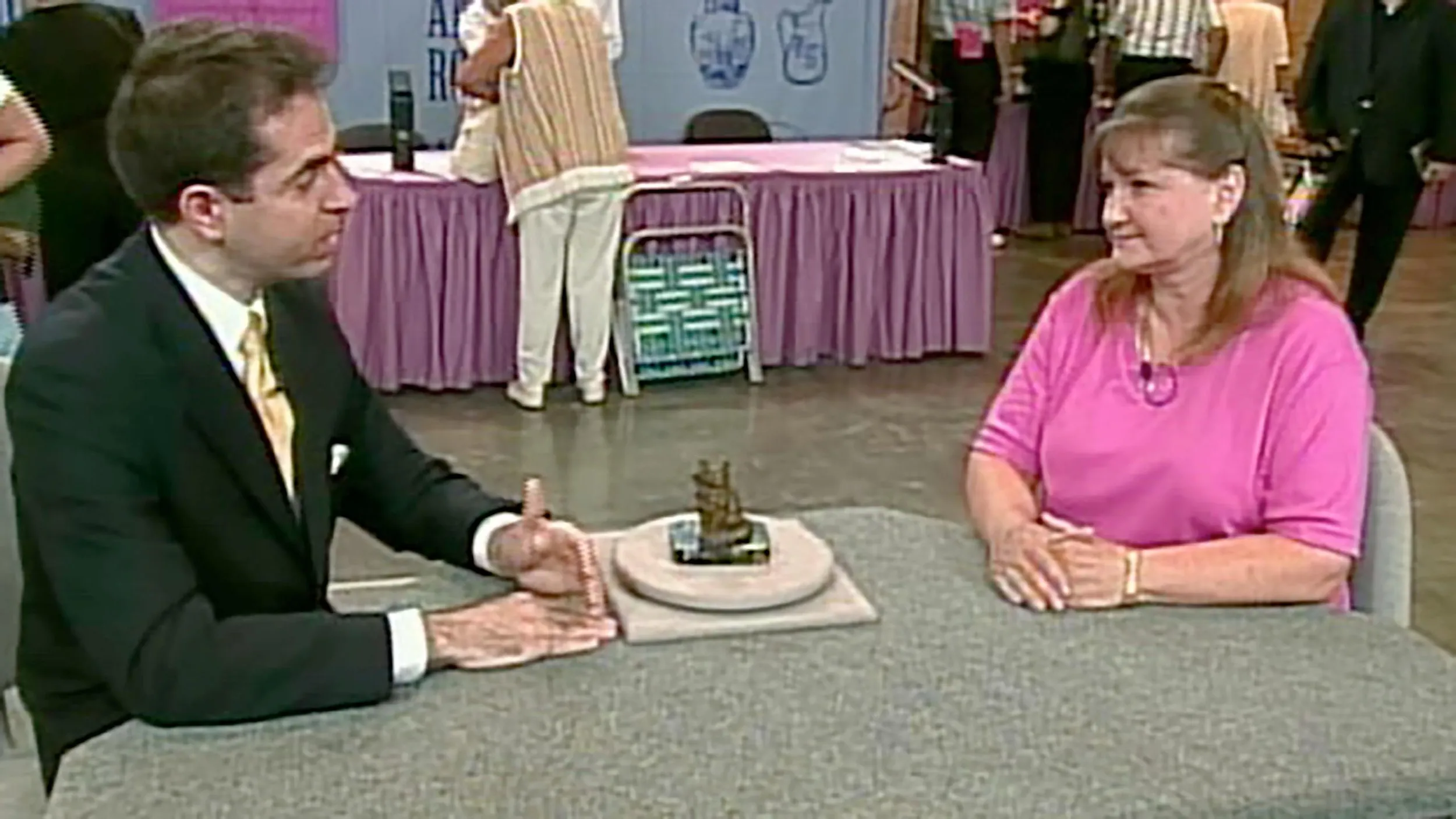GUEST: These are urns that I inherited from my grandmother.
APPRAISER: Okay.
GUEST: And I just love them.
APPRAISER: What do you think they are?
GUEST: I was told they were Sèvres urns.
APPRAISER: Okay, do you know anything about Sèvres?
GUEST: Not much.
APPRAISER: Okay. The Sèvres factory was the royal porcelain factory in France. It supplied porcelain to all of the king Louis, and it was a very important factory throughout the 1700s and into the 1800s. Now, they did a lot of work which involved extremely, finely painted porcelain, okay? Now, you thought that these were porcelain.
GUEST: Right.
APPRAISER: Well, they're not.
GUEST (laughs): Okay.
APPRAISER: They're actually enameled metal.
GUEST: Hmm.
APPRAISER: Which is rarer and probably a lot better. They do have that porcelain look to it. Right. But what they do-- how they make enamel is, is they take very finely ground pieces of glass, and they actually lay it on top of a copper or metal surface, and then they fire it into... very, very highly and very intensely. And that's how you get this wonderful glaze to it. You can see how beautifully painted this panel is here, painted with a courting couple. And oftentimes, you'll get a signature along the bottom. In this case, there's no signature, but that really doesn't matter a lot. And you also have a landscape painted along the lid. I also wanted to point out that these bits that look like pearls and garnets are called jeweling, and jeweling is a form of enamel, just as this enamel ground is. Now, along the backside is, like, double, double, double your money. You get a nice landscape panel on the back. What's wonderful about these is that it's a combination of really finely painted panels and these gilt bronze mounts. Now, these are potpourris, because it has this open band at the top. So you would have incense or scented flowers or whatnot that you would put up on a mantelpiece. What do you think they're worth?
GUEST: I have no idea.
APPRAISER: I knew you were going to say that.
GUEST: Of course you did. (laughing)
APPRAISER: They are a very, very finely painted pair of potpourris from around 1860, in the Sèvres style, and they're probably worth around $8,000 to $12,000.
GUEST: (laughs): Oh, my gosh.
APPRAISER: They're beautiful.
GUEST: Thank you.
APPRAISER: There's one thing that I wanted to point out, though, just for the future. It looks like very early, probably in the 20th century, there was a restoration that was made here. It's very easy to chip this metal, and without that little bit of restoration, they would be worth even more, but they are a terrific pair of potpourris.
GUEST: Thank you.
APPRAISER: You must've been Grandma's favorite.
GUEST: That's it! How'd you know? (laughing) Thank you very much.
APPRAISER: Thanks for coming in.
GUEST: Appreciate it. Goodness, good, gooble dee goo.











